#c;hadrian
Text
Hey Mr. C!
I have seen your one shot request and will get to it soon! I promise you that I am very interested in writing this out! I see it very very vividly!
Expect it by either later tonight (its 5 pm for me) or tomorrow around this same time!!!
I have seen your ask and accepted it! I will do them justice I promise! I did not respond to the ask because I'm keeping it to reply with the one shot.
See you soon!
#mcsm#minecraft story mode#lukas rambles#oneshot#gabriel x hadrian#i C your ask! ahaha!!#signing open!#ask me anything
2 notes
·
View notes
Text



thinking abt the mondragone head again. whatever.
5 notes
·
View notes
Text

Hadrian's Wall was built in c. AD 122 on the orders of Emperor Hadrian. Today, the Wall runs across northern England, but when it was built, it was the northern frontier of the Roman province of Britannia. With the exception of a couple of decades in the mid-2nd century AD, Hadrian's Wall was the north-west frontier of the Roman Empire for approximately 300 years. It was built to separate the Romans from the Barbarians¹ and may have been built in response to guerrilla warfare waged by the natives. It was certainly built to secure the border and control the movement of people in and out of the Empire.
The Wall is believed to have taken about six years to complete, although it would continue to change and evolve for decades after completion. Initially, some parts were built from timber and turf and others in stone. Eventually, the entire Wall, from Maia in the west to Segedunum in the east, was built in stone. In front of the Wall, where there were otherwise no natural features for protection such as rivers or cliffs, the Romans dug a deep ditch. Behind the Wall was the Vallum, which was an earthwork that comprised two banks of earth with a deep ditch in between. The Vallum stretched almost the entire length of the Wall, over 70 miles, and probably defined the rear of the Wall-zone.
The height of Hadrian's Wall is difficult to know because so little of it remains. It probably varied depending on the terrain. For example, the Wall as it crossed the high cliffs of the Whin Sill was possibly about 4-4.6 metres high (13-15 feet) and slightly higher—possibly 4.6-5.5 metres (15-18 feet) or more—when it crossed easily traversed terrain.
Hadrian's Wall has been used as a quarry since it was abandoned. Today, only about 10% of the Wall remains, and the sections of wall that have survived stand at a height of just 1-2 metres in most places. However, as recently as the 16th century there was a section of Wall standing 5 metres high (16 feet) near Bowness-on-Solway. Samson Erdeswick records in 1574:
"Begyning abowt a town called Bonus [Bowness-on-Solway] standing vppon the river Sulway now called Eden, and there yet standing of the heyth of 16 fote, for almost a quarter of a myle together, and so along the river syde estwards."
William Camden (16/17th century):
"Within two furlongs of Caervoran, on a pretty high hill the Wall is still standing, fifteen feet in height, and nine in breadth."
Bede (7/8th century):
"It is eight feet in breadth, and twelve in height, in a straight line from east to west, as is still visible to beholders."
These writers lived many centuries after the Roman military abandoned Britain. Even Bede, the earliest reference to the height I have used, was writing some 300 years after the Roman military had left Britain. Thus, the Wall might have lost a few feet in height in places by his day.
With regard to thickness, Hadrian's Wall was up to 3 metres (over 9 feet) thick, but again, it varied. Some sections were about 2.5 metres thick (8 feet), and other sections narrower.
In its day, Hadrian's Wall was an impressive 73-mile-long (80 Roman miles) stone structure with no fewer than 16 large forts, 80 milecastles, and about 160 turrets. It crossed over rivers, hills, and along cliffs, from the west coast to the banks of the River Tyne in the east.
An unbelievable structure that survives from the ancient world.
Location: above Sycamore Gap looking east.
Source:International Man of History/FB page
2 notes
·
View notes
Text
i've been. exceptionally slow at working my way through Spring in Hieron, because i find i'm needing to focus a lot more on work projects than usual.... but the upside of that is that instead of getting emotionally sucker-punched by podcasts in my cubicle, i get to cry over podcasts in the kitchen while getting ready for work in the morning!
(anyway i finished SiH 5 today and was quietly devastated by the Hadrian-Samothes conversation at the end)
#mine#f@tt liveblogging#friends at the table#spring in hieron#real talk i don't think i can ever play a paladin in anything because hadrian and the complexities of his relationship to the divine#have just set such a HIGH storytelling bar for me#like. you all saw how emotional i got over WiH 28!! and NOW#''you will always have the warmth of my love but it will not be a living warmth''?#''i want them to look at you and think of you not me''??#''the end will find us whether we cower or not. there is no reason to be fearful. so above all else try to live a good life''???#I JUST. I JUST#something about the reversal of that expression of faith --#samothes releasing hadrian while knowing it'll be the hardest fucking thing in the world for hadrian to be. bereft of him#and doing his utmost to tell him ''you can do this. it will be hard but you can do this''#''you will want to do this for me but at the end of the day. do it for yourself and do what i could not''#-- it just fucking gets me#anyway i'm so normal about hadrian and the hieron gods always#(ALSO TOTALLY TANGENTIAL but c/w prequel was a fucking BLAST. great palate cleanser in between sih eps lol)
3 notes
·
View notes
Text
The subtitles on the show I’m watching just turned “plastic polyhedrons” into “plastic poly Hadrians” which. What a truly insane group of words.
#I’m picturing a bunch of identical action figures (?) of roman emperor Hadrian (??) in a polycule#night at the museum/toy story style#and I don’t know how to feel about it#honestly the fact that i can watch a talkback show held over zoom with seven people#that are a) speaking my second language (with US accents) b) making incredibly niche and US-specific (dated) references all the time#and c) liberally sprinkled with d&d terms and ALL THAT with less than ideal subtitles#is a sad testament to just how much time i've recently spent listening to these exact people#like yeah the subtitles ARE tripping me up but i can literally turn them off and be fine. which should NOT be the case#but also lbr i've been so culturally colonised that if they were to make German specific references I'd probably be MORE lost#and the language at this point is almost a toss-up#adventuring party#hilarious#hadrian#ancient rome#history
3 notes
·
View notes
Text
daily i am haunted by the friends at the table amvs i cannot make
#thinking about your sangfielle another new world amv#THINKING ABOUT YOU THE CHIME FAMILARITY AMV#thinking about you marrow tenfour…. nothing probably helladelaide…#catabolic seed jolyon! pink + white hadrian and rosana! good boy by dog bite lyke!#lay down your tools bt a shell in the pit gur sevraq… well that’s an instrumental i could do that one#THIS IS A LIFE FOURTEEN FIFTEEN…. the bug collector duvall…. bad luck by jhariah also duvall… no surprises mako :<…#all this useless energy mako :/ you’d think i was a big makoguy from these and i mean i like him but he isn’t even my fave c/w pc his ending#just destroys me. kills me dead.#the rifles spriral primary-satellite if i was feeling evil#THIS ISNT EVEN THEM ALL#chats
13 notes
·
View notes
Text

Nevada was out for for his morning run on the beach, deciding to leave his shoes behind as he loved the feeling of sand between his toes. The morning air was a little chilly but he didn’t notice as sweat dripped down his forehead. As he started to slow his pace that’s when he caught the sight of a beautiful adonis rising out of the water, it nearly stopped him dead in his tracks even tripped the man up as he came to a stop. His dark eyes focused on the beautiful man, body glistening in the rising sun. Nevada found himself speechless and frozen in place as the older man began walking back to the shore. It didn’t take long before he found himself drawn to him, feet moving on his own before suddenly finding himself right in front of the golden god.
He only towered over Hadrian by a couple inches but Nev couldn’t help but be mesmerized by those beautiful blue hues. There were no words that yet left his lips, afraid they would only tumble out in a mess. When he finally manage to speak, the younger man felt pathetic in that moment. “Wow... I mean, hi...or, good morning. Uhm... I’m... I’m Nev.”
@seacaptainhadrian
1 note
·
View note
Note
[shower] – sender takes one look at a bruised and bloody receiver, and goes to run them a shower. hot showers fix everything. // for Piotr maybe? or anyone you want!
@deepwcb | I can't remember what meme this goes to

One look at Yulia has Hadrian shaking his head, eyes narrowing dangerously. There are a plethora of things he could say, could demand of her. Instead, he scoops the young woman up, bearing her away to the bathroom.
Eons ago, this would not have been his reaction. He would have, no doubt, punished her for a perceived failure. He's long since learned better habits to keep. And, perhaps, he has a soft spot for this one. She's tenacious, fearless if the state of her is any indication.
Hadrian sits her on the edge of the bath tub, starting the water before finding the various salts that are meant to help with healing loosening of muscles. "Get undressed, this will help."
#c. halbrand | sauron | hadrian | mairon#i. halbrand + yulia#( lordofforgegifts | a n s w e r e d )#( mail | a n s w e r e d )#( sorry this took forever piotr wouldn't play ball and aurelius was being a dick but sauron was willing to play ball )#deepwcb
1 note
·
View note
Text
My favorite Roman emperor is our girl Heliogabalus simply because I find her the most interesting to read about.
Ya never really know what someone means when they ask you to name a "favorite" Roman emperor. Do they mean the nicest guy? The least incompetent administrator? Cuz as far as I can see they were more or less all rotten bastards and most tended to be not especially good at their jobs either. And that's easy to say about your Neros and your Caligulas and dudes like that, but it goes for the "good" ones too. Like Trajan and Hadrian are often held up as good'uns but they were each so committed to the pursuit of ethnocide that it's often debated whether Trajan or Hadrian ought to be the guy to blame for the Jewish diaspora. And good ol' Marcus Aurelius tried his very best to do two ethnocides during the Marcomanic Wars; they ain't put that part in Gladiator. Maybe this ain't politically correct or whatever of me but I just don't think that to be sound foreign or domestic policy. The attempted ethnocides, I mean.
And if we're gonna put our critical faculties aside and do that thing where we act like silly Romantics and talk about history like it was sports, in that case I think it's just swell when empires collapse and I'm not particularly upset about the triumph of heathen barbarism over Christian civilization, so we're out of that game as well.
So, my "favorite" Roman emperor needs must be the one who's never, ever boring, b/c that's the only thing the question could mean to me.
Also, I think Heliogabalus gets a raw deal from chroniclers and later historians cuz if we're really gonna do the devil's calculus and sit here talking about who killed more people than who, she and Antoninus Pious are probably tied for who racked up the lowest body count and ruined the least lives. It's not zero, but it's at least a few dozen thousand lower than the mean.
199 notes
·
View notes
Text
Trimontium Roman Fort
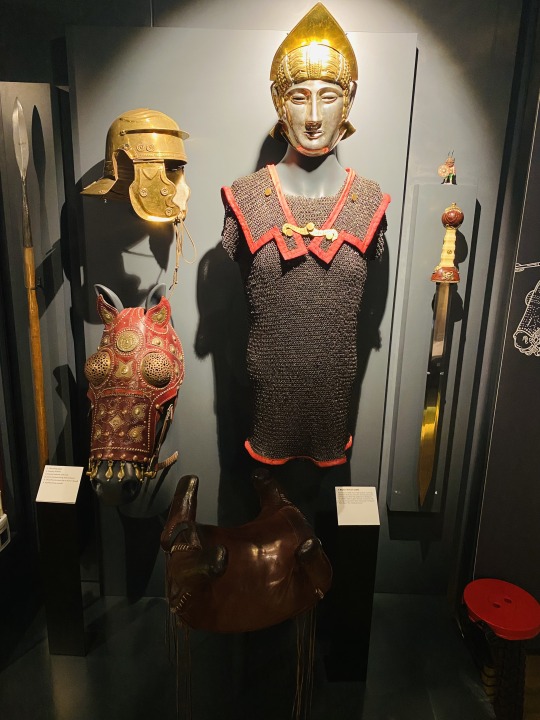
A departure from the Early Modern period to do a thread about the Roman fort of Trimontium in what is now the Scottish borders. I visited the museum at the weekend, and it was great! 1/14
Trimontium, now called Newstead, was first built about around 80 AD, during the Roman General Agricola’s invasion of Caledonia. It stood for over a century in an area known as Trimontium – between three hills.
The land had been occupied by native tribes since at least the Iron Age, with multiple settlements existing on the slopes surrounding the fort.
It served as a military base in Caledonia, and seems to have primarily been a cavalry depot for long periods – there are lots of horse remains, as well as these helmets and ceremonial faceplates belonging to Roman cavalrymen.


The XX Legion spent time there (as did the VIII, earlier on), as evidenced by the remains of this plaque.

A Roman soldier’s service record!

The fort’s strategic function shifted over time –it was a bulwark existing beyond Hadrian’s Wall, then after the construction of the Antonine Wall further north it became more of a logistical hub, then resumed being a frontier fort after the Antonine Wall’s abandonment.


Small settlements sprung up around the fort’s walls, and it is likely there were regular peaceful contact with the surrounding tribes. However there is also evidence of conflict. Roman forts came under sustained attack across several periods, and it looks as though when the fort was finally abandoned, it was done so in a hurry.

As per soldiers from the Ancient World to modern-day Iraq and Afghanistan, when the troops move out they leave a lot behind – lucky for the archaeologists and historians.
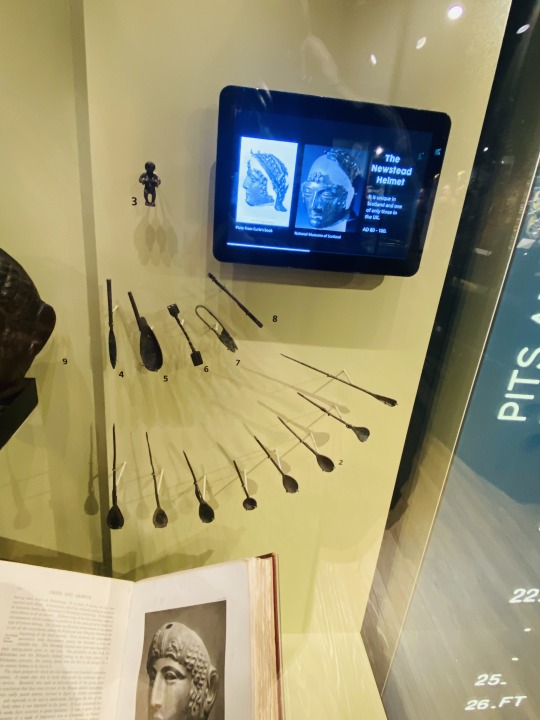
I am amused by how miserable Roman soldiers must have been after getting assigned to northern Britain. The ends of the earth indeed! I also do scoff at the whole “I think about Rome every day” meme, but I can see the allure, and I find it extremely interesting comparing and contrasting what I know about 18th c. militaries with the Roman Army. There were definitely a fair few things that I think the Romans were better at, especially when it comes to organisation, logistics and efficiencies!

#history#military history#roman history#scottish history#scotland#scottish#rome#roman#roman empire#ancient history#classics#classical history
153 notes
·
View notes
Text

Rome is Building an Eight-Story Underground Museum – But Treasures Keep Getting in the way
Rome, as it’s often said, wasn’t built in a day. And nowhere is that more evident than its state-of-the-art Metro Line C, an ambitious project meant to help relieve the Italian capital’s renowned traffic hellscape and celebrate its rich archeological history with a unique-in-the-world underground museum.
The €700 million line ($757.7 million) was originally envisioned for the Catholic Jubilee of 2000 as a vital link between Rome’s San Giovanni Cathedral and Vatican City’s St. Peter’s Basilica, making it easier for visiting pilgrims to collect indulgences by walking through the churches’ holy doors. Rome’s major basilicas open their holy doors only during Jubilee years, allowing Catholics from all over the world to make pilgrimages to the city to walk through them, symbolizing an openness to receive mercy and reconciliation.
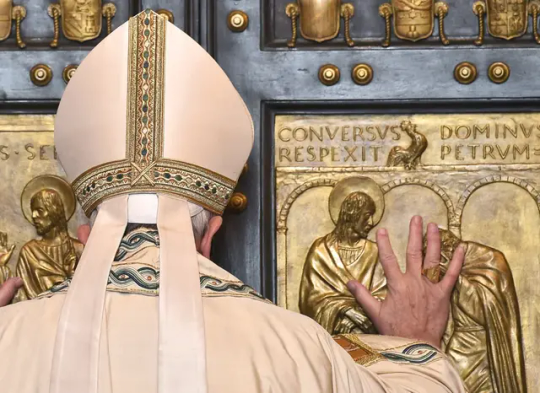
But the 2000 dream never happened, thanks to a series of problems ranging from a corruption scandal in the city government and the sheer number of archeological objects – 40,000 in all, from petrified peach pits to pottery and vases and even the walls and mosaics of Emperor Hadrian’s 2,000-year-old military barracks – found with each shovel full of dirt during the initial preparations.
Now the hope is to have the line’s showcase Piazza Venezia stop, featuring an eight-story underground museum, ready in 10 years, according to engineer Andrea Sciotti, who is in charge of the metro museum complex. This will allow them to open around the Jubilee of 2033, which will mark 2,000 years since the death of Jesus Christ.
“It’s true, 10 years seems like a long time, but we aren’t just dealing with the engineering issues,” Sciotti said inside the construction site. “This station will be judged as the most beautiful in the world … we don’t have to rely on museum items being brought in, the museum station is in its original context in ancient Rome.”
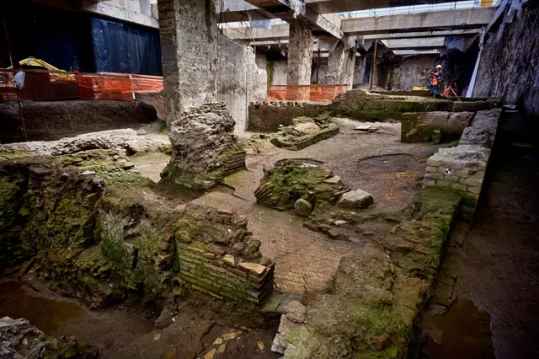
Displayed where they were found:
During the initial phases of work carried out in the last five years, Sciotti said all of the artifacts were removed from the site for restoration. Each will be placed exactly where it was found inside the metro museum, which is being dug some 85 meters (280 feet) deep, encompassing eight stories below the modern city of Rome.
Over the millennia the modern city has been built over covered ruins. Only around 10% of ancient Rome has been excavated, with the rest still buried some nine meters (30 feet) below the current city, according to Rome’s tourist bureau. The city dates back to the stone age and construction work is notoriously hampered by the discovery of ruins that are too plentiful to even excavate and are often reburied to preserve them. Even simple infrastructure work, like sewage repairs, have to be attended by archeologists who have the power to stop the work if something is found.
There will be 27 escalators, six elevators and 66,000 square meters of archeological exhibit space. Ancient walls found during excavations will be placed “in situ” in the modern station and the ancient Via Flaminia that ran through the ancient city to the nearby Roman Forum and Colosseum.
The station’s three main entrances will connect the three museums around the square: the Vittoriano, the Palazzo Venezia and the outdoor ruins of the Roman Forum anchored by the Colosseum at the far end, which has its own metro station that will also feature museum and exhibit space.
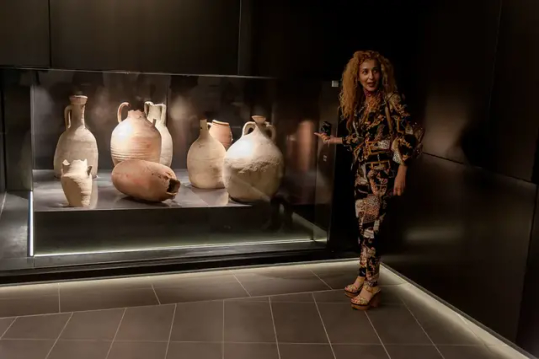
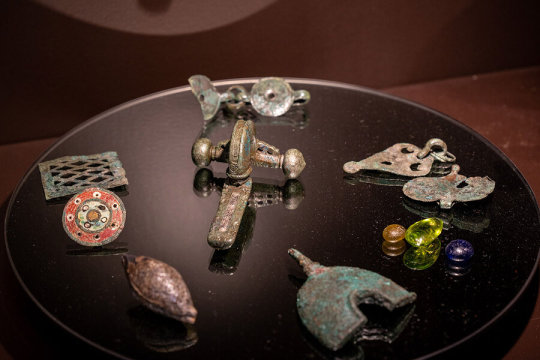
Several of the archeological sites will have access points from inside the metro museum, meaning commuters and tourists alike can exit the station by rambling through historically significant ruins like Hadrian’s Auditorium, which was discovered when the initial archeological investigation into the project started and was meant to be the location of the station entrance. Since then, they moved the site and excavated the ruins, which are currently only visible looking down from street level.
‘Top down’ excavation system:
To secure the site as they dig, engineers are using a “top down” excavation system, which has never been used in Italy but was an integral part of the Jubilee line in London. Cross walls and diaphragms are being buried deep into the soil to form the perimeter of the underground complex, with the dirt taken out recycled and enhanced to be used in the building materials, Sciotti said.
The train tunnels themselves are not the issue since they will be more than 100 feet below ground.

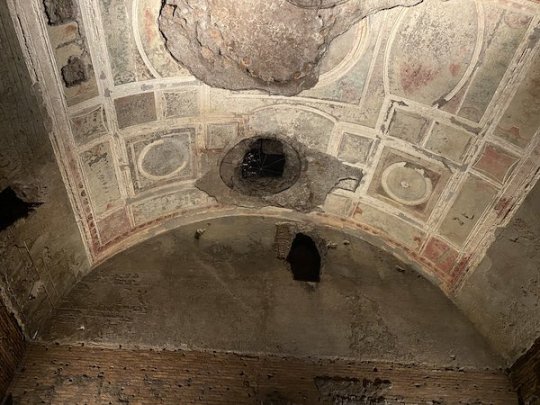

The Venezia station museum stop is not the only treasure on the new line. In 2016, archeologists working on the site of the Porta Metronia (previously known as the Ambra Aradam) station found a 39-room complex that spanned more than 9,700 square feet that has been incorporated into the underground station, which will open by the end of 2024. In 2025, the new Colosseo-Fori station, complete with a four-level underground museum to showcase artifacts including 25 archaic wells unearthed when it was built, will also open after activation tests, meant to begin in October, are completed.
The entire 26-kilometer C-line will be Italy’s first fully automated driver-less subway system and will reduce road traffic by 400,000 vehicles a day, meaning CO2 emissions will be reduced by some 310,000 tonnes a year, according to the WeBuild group, which is the main contractor for the project.
The original plans from the 2000 Jubilee have been modified to eliminate several stations in the historical center that would have simply been too difficult to excavate.
By Barbie Nadeau.
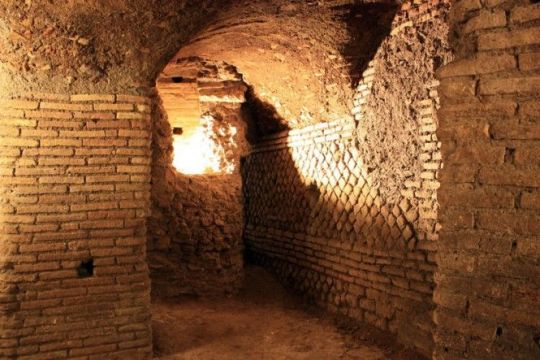


#Rome is Building an Eight-Story Underground Museum#The Venezia station museum#Metro Line C#Piazza Venezia stop#ancient artifacts#archeology#archeolgst#history#history news#ancient history#ancient culture#ancient civilizations#ancient rome#roman history#roman empire#roman art#ancient art#long post#long reads
121 notes
·
View notes
Text
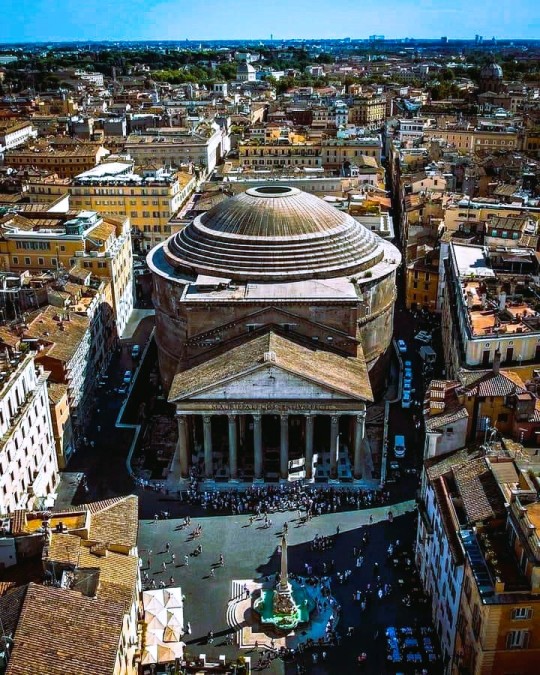
Pantheon, Roman temple, Rome, Italy: The Pantheon is a former Roman temple and, since AD 609, a Catholic church in Rome, Italy. It was built on the site of an earlier temple commissioned by Marcus Agrippa during the reign of Augustus, then after that burnt down, the present building was ordered by the emperor Hadrian and probably dedicated c. AD 126. Wikipedia
86 notes
·
View notes
Photo

Tacitus
Publius Cornelius Tacitus (l. c. 56 - c. 118 CE) was a Roman historian, active throughout the reign of Trajan (r. 98-117 CE) and the early years of Hadrian (r. 117-138 CE). His best-known works are Histories and Annals, which cover the history of the empire from the time of the Julio-Claudians to the reign of Domitian (r. 81-96 CE). Although best known for his historical writings, he also had a long public career, serving as a quaestor in 81 CE, praetor in 88 CE, a tribune of the plebs, a consul in 97 CE, and proconsul of Asia from 112-113 CE.
Even though he was highly critical of emperors Tiberius (r. 14-37 CE), Nero, and Domitian, his works still revealed an allegiance and devotion to the empire; however, he is often criticized for his careless treatment of geography and military history. Many historians believe his personality is seen throughout his works, demonstrating imagination and wit but also revealing a sense of moral indignation. His surviving works are:
Agricola (De vita Julii Agricolae)
Germania (De origine et situ Germanorum)
Dialogue on Oratory (Dialogus de oratoribus)
Histories (Historiae)
Annals (Annales)
Life
Considered by many to be the greatest of the Roman historians, Publius Cornelius Tacitus was born around 56 CE during the reign of Emperor Nero (r. 54-68 CE) to a prosperous provincial family from Cisalpine Gaul. He received an excellent education, studying both rhetoric and law while reading the works of the great Roman orator Cicero and the rhetorician Quintilian. Later, along with his good friend Pliny the Younger, he even made a brief appearance in a Roman law court. While her name is lost to history, he married the daughter of the governor of Britain, Gnaeus Julius Agricola, in 77 CE. The governor would be the subject of one of Tacitus' more famous works Agricola (De vita Julii Agricolae) written around 97-98 CE. Although mostly a biography, Tacitus took the opportunity as its author to lash out at Rome when he said they were the robbers of the world and sought domination in profit.
Continue reading...
37 notes
·
View notes
Text

Bust of the Emperor Hadrian
The head of the bust is Roman (c. 2nd century CE), and the beard was recarved c. mid-13th century CE at the court of Frederick II. The bust is Venetian (c. late 16th century CE). It was offered to the Medici family in the 16th century, but the purchase was declined.
Chalcedony, silver gilt, enamel, pearl, and green porphyry.
H. 20.8 cm; W. 18.8cm; D. 9.5cm
Currently in the collection of the Al Thani family.
Open image for higher quality
13 notes
·
View notes
Note
random anon throwing in my two cents (all that’s in my wallet actually) but while i don’t mind in the context of Hanging Rose if wilbur becomes willum since tommy is already tomys, in general i am very leery of name changes. because it’s you, I’d probably still give anything you read a chance since you’re epic, but i usually don’t even touch a fic when a name gets changed. for some very fanon-relevant characters (which sbi definitely are. I’ve read so many versions of who they are /pos), names are often one of the few consistent, binding things, so I feel like if you take that away it’s suddenly just some other guy. a different character. “what’s in a name” and all that. to me, c!wilbur is very different from somebody with all the same characteristics and looks but named walter or smth (there’s a walter white joke to be had in here somewhere. pretend I made it and that it rlly landed good and normal). ive seen similar things occur in different fandoms where the most oc’ified characters get their name changed constantly (hadrian black…….) and it just fails to rlly feel like the same character, superficial though a name may first seem. im attached to the characters, and a lot of a character is defined by name in fics. but when it comes down to it obviously just do what you want and live your best writing life in whatever way is most comfortable for you!
this is a very good point and one I pretty much agree with. in the past I've very much been against the oc-ification of characters in fandom spaces solely because like what you said, I'm attached to the character and it fails to feel the same. this is just... an unusual situation I'm struggling to find the right way to deal with. like, yeah, I think I've done a lot more character work on c!wilbur than cc!wilbur ever did. but I am attached to the character from canon itself.
I do want to emphasize for all that I've been saying the character is mine now, I have always been very focused on writing c!wilbur in a way that feels in line with the character and that's not going to change if I do end up finishing rose. the only reason I've considered using willum as a name is because in the fic itself, rose!wilbur's name is already willum. like, that's his full name and wilbur is a nickname. if I switched the text to call him willum solely, nothing about him as a character would change. I would still be writing c!wilbur. I wouldn't be trying to change him to turn him into my oc. the only purpose the name change would serve would be to help readers have an easier time feeling the separation of c!wilbur and cc!wilbur
also, the main reason I feel like this could work is because an anon helpfully pointed out earlier that, like, 75% of glass divine never called him wilbur. it only called him the pythia. and the readers seemed to have no issue with that so I feel like switching to willum would be more akin to that rather than me trying to oc-ify c!wilbur
I hope that makes sense!
33 notes
·
View notes
Text

Roman Empire AR denarius, c. 120-121 CE, Hadrian
25 notes
·
View notes